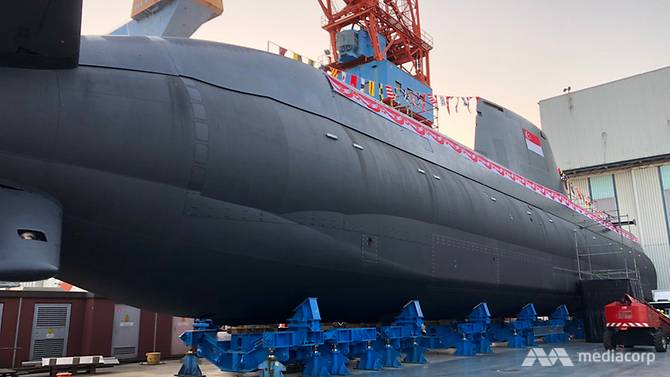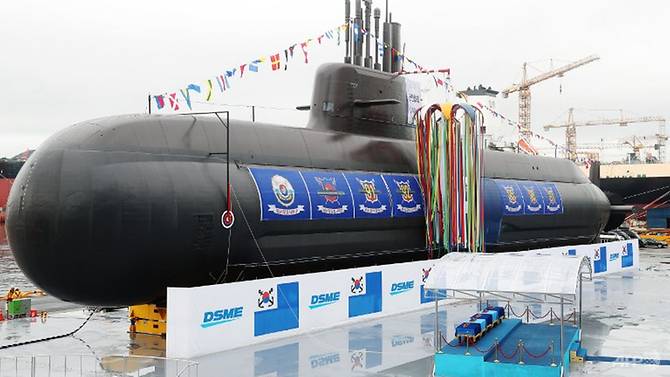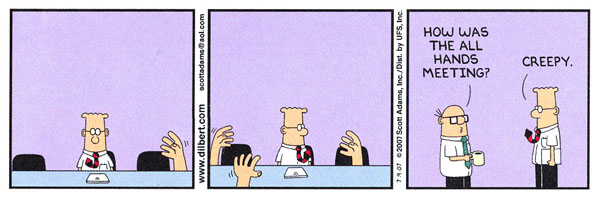
Posted on 02/25/2019 5:17:58 AM PST by sukhoi-30mki

The 70-metre long vessel, christened the Invincible, will soon be in operation in Singapore waters. (Photo: Jeremy Koh)
SINGAPORE: With the launch of RSS Invincible in Kiel, Singapore is the latest Asia-Pacific country to introduce new-generation submarines, riding on a persistent trend observed amongst regional navies in acquiring undersea capabilities.
Notably, just last year alone South Korea launched its first 3,000-ton KSS-III submarine that has enhanced long-range missile strike capabilities. Japan too has introduced the world’s first submarine equipped with lithium-ion batteries for enhanced underwater performance.
Further south, Australia just last week inked a strategic partnering agreement with France, committing to the 12-boat, US$50-billion Future Submarine programme.
But it is in Southeast Asia that Singapore’s latest addition to its navy becomes significant. Customised to the navy’s requirements, the new Type-218SG with its in-built air independent propulsion (AIP) and larger weapons load is arguably the most sophisticated submarine introduced by far in the region.

The 3,000-tonne diesel-electric submarine, Dosan Ahn Chang-ho, is seen during a launching ceremony at a shipyard on the southern island of Geoje. (Photo: AFP/YONHAP)
JUSTIFYING THE EXPENSE?
Singapore began operating submarines in the 1990s, purchasing second-hand boats from Sweden.
The first four boats, the Sjoormen (renamed Challenger) class, seeded the navy’s initial undersea operational and training capacity. They were built in the 1960s, and progressively retired as the pair of 1980s-vintage newer Vastergotland (renamed "Archer") class entered service after 2005.
Usually a warship can serve up to 30 years, maybe 40 years with careful maintenance. But aged platforms are generally less cost-effective to upgrade for extended service, and is less safe to operate.
Acquiring a submarine capability is time-consuming and resource-intensive. Without timely replacement, a pre-existing submarine capacity may be lost over time.
Not many people know that Thailand was in fact Southeast Asia’s first submarine user, operating four Japanese-built boats from 1938 to 1951. Since then, without replacement, the Royal Thai Navy saw the erosion and eventual loss of its submarine capacity, which had to be built from scratch again at huge expense with its recent decision to purchase three boats from China.
Putting aside the practical issue of sustaining a painstakingly built military capability, the question is why pursue a submarine capability of all naval platforms?
A submarine, unlike a surface warship, operates unseen underwater – it can only be heard on sonar. The underwater environment is complex, and sonar technology is still short of perfect. One may mistake sounds made by a marine mammal for a submerged submarine.
The submarine’s stealth qualities when submerged makes it a formidable foe to any naval planner.
During the Falklands War in 1982, the Royal Navy expended much effort without success to hunt for a single Argentine submarine San Luis which was regarded as a single major threat to the British fleet off the isles even after Buenos Aires refrained from committing its surface fleet – including its sole aircraft carrier – following the loss of battlecruiser "General Belgrano" to the British submarine "Conqueror".
The disproportionate amount of countermeasures undertaken by an anti-submarine force just to locate and destroy one submarine thus complicates the adversary’s strategy, causes diversion and may be potentially decisive in an armed conflict.
This may explain the persistent allure of the submarine to Asia-Pacific navies seeking to bolster peacetime deterrence.
In Singapore terms, submarines are quite literally the poison shrimp.
RACE OR NO RACE?
But doesn’t Singapore’s acquisition risk sparking off an arms race? This is a frequently asked yet cliched question. Broadly speaking, an arms race constitutes an action-reaction cycle between countries seeking to enhance their military capabilities over their perceived or actual adversaries.
Such a phenomenon takes on both quantitative and qualitative dimensions. The first deals solely with pure numbers. The latter concerns the inherent capabilities of a submarine.
Whether Singapore’s latest Type-218SGs would provoke a submarine race in Southeast Asia at least, requires a nuanced examination. The Republic of Singapore Navy will ultimately have just the four Type-218SGs after 2024, which represents overall no expansion in fleet size once all ex-Swedish boats are retired.
From a mere “bean-counting” perspective, Singapore may not be altering the naval power balance in the region.
However, like many other Asia-Pacific navies because of the exorbitant expense involved, Singapore may not be introducing more submarines but at 70m long and displacing 2,200 tonnes while submerged, the Type-218SG is without doubt larger and more capable.
It has a built-in German-made fuel-cell AIP technology for prolonged underwater endurance – meaning, less frequent need to “snort” or consume air to replenish its batteries. This feature does not represent a drastic capability step-up since the Archer class already operates the Swedish Stirling AIP that serves the same function, albeit with a 50 per cent increase in submerged endurance.
But because of its larger capacity, the Type-218SG has ample room for future upgrades. This means keeping with the evolving threat environment Singapore may face in the future to progressively enhance the submarine’s capability without necessarily expanding the fleet.
This means the latent potential to equip the Type-218SG with weapon systems such as long-range offensive strike missiles even though at present it is not armed with such. A submarine paired with unmanned underwater vehicles can also greatly enhance the boat’s discretion.
Unlike a surface warship that has multiple peace- and wartime functions, a submarine is by inherent design built to shoot and destroy. In times of peace, the submarine’s primary purpose is to conduct surveillance – either shadowing targets of interest out at sea, or even sneaking up a foreign coast to collect vital intelligence.
Therefore, when seen in the context of the Asia-Pacific geopolitical flash points, such as the South China Sea disputes, it is difficult to ignore the destabilising potential of submarine proliferation.
Recall the infamous “Whiskey on the Rocks” saga involving a Soviet submarine inadvertently grounded on Swedish shores, close to a sensitive naval installation in 1981.
Tensions were high over almost two weeks of diplomatic quarrel and military posturing between Moscow and Stockholm. It is no longer the case of whether a similar incident will happen in the Asia-Pacific, but a question of when.
In January last year, a Chinese submarine was detected and tracked by Japanese naval forces before it surfaced off the disputed Senkaku or Diaoyu Islands in the East China Sea. This incident, which fortuitously did not develop into an incendiary situation, appears to be a harbinger of future risks in store.
NEED TO RECONSIDER SAFETY RULES OF THE GAME
Nevertheless, of more immediate concern would be the more likely, potential risks of an underwater accident involving submarines, especially in the congested Asia-Pacific waterways.
Political sensitivities over national sovereignty in the region may impose additional stumbling blocks against efforts to promote submarine safety.
Less intrusive preventive measures, such as Singapore’s Submarine Safety Information Portal (SSIP) and Underwater Code on Unplanned Encounters at Sea (UCUES) could be the possible starting point. These voluntary, non-binding mechanisms only promote information-sharing about navigational hazards and standard procedures to prevent and mitigate underwater accidents, not such sensitive data as submarine locations.
The Asia-Pacific is witnessing the fastest rate of submarine proliferation, yet underwater safety measures ominously lag behind. Therefore, it is time for regional governments to rethink their positions on bolder submarine safety measures, along the lines of water space management and prevention of mutual interference mechanisms for submarine operations that advanced militaries have applied, including those under the North Atlantic Treaty Organisation (NATO).
These initiatives may eventually be kickstarted by a group of like-minded, Asia-Pacific navies as a minilateral framework, which can then be gradually expanded in membership. Getting more countries on board seed initiatives such as SSIP and UCUES may be a way forward. They may be modest measures, but at least much better than waiting for a submarine mishap to happen one day.
Collin Koh is research fellow with the Maritime Security Programme, at the Institute of Defence and Strategic Studies, S. Rajaratnam School of International Studies, based in Nanyang Technological University, Singapore.
Read more at https://www.channelnewsasia.com/news/commentary/singapore-poison-shrimp-strategy-new-submarines-type-218sg-11260946
Interesting. Oh and Belgrano was a light cruiser (CL), not a battlecruiser (BC).

Why?
Does Singapore have enemies that can be harmed by a submarine?
I suppose they are doing this because of China.
Singapore’s Type-218SG submarine is a U-boat.
Bummer about no deck guns.
No but they can sell it.
Nasty not-so-little buggers. PITA for aquarists that try to keep them. Fully capable of pulverizing coral to get at "food" that's seeking shelter, cracking the aquarium glass, not to mention inflicting painful injuries to human flesh.
I noticed that as well. I believe it was originially the USS Phoenix. I saw a model of it in the Phoenix airport, once back in the ‘80s.
Singapore's armed forces wish to maintain parity with Malaysia and Malaysia has submarines.
I spent some time with the Singapore Navy on one of their frigates. Nice ship. Great food!
I think that the Belgrano was originally a USN ship.
Just checked:
Yes, she was CL-46, the USS Phoenix, originally.
Well, that's just asking for it.
I don't think there's any question about that. China has been running around the Eastern Pacific, claiming every patch of water in sight--building islands in the middle of nowhere to stake their claims.
China only looks at things one way: Their Communist Party elite need to own the entire world and enslave everyone else. Sixty years ago, the countries mentioned in the article were bamboo charity cases featured in pitiful UN short films before the main feature at the movies. They were getting eaten by Soviet-spawned insurrections and pushed around by Red China. But as the Soviet Empire imploded, they used economic freedom to develop real economies and figured out that the only way to stay out of the Chinese lion's mouth is to amass cost-effective weapons to kill lions.
I agree, it seems obvious that the purpose of these submarine programs is to let the air out of the China balloon. Thank God.
I'll have the Kung-Pao Chicken, instead, please.............
Its a pity that in this modern technological era of pervasive detection and a myriad of stealthy ordinance, that today’s “Battleship Admirals” do not realize that the time. of surface capital ships is over. They are floating coffins for their young crews.
I highly trained special forces soldier($100,000 per) can be killed with a $.50 bullet. You do not make sense.
Is it halal?
“Does Singapore have enemies that can be harmed by a submarine?”
The biggest risk to Singapore’s new sub is probably from one of our Destroyers accidentally running into it.
Disclaimer: Opinions posted on Free Republic are those of the individual posters and do not necessarily represent the opinion of Free Republic or its management. All materials posted herein are protected by copyright law and the exemption for fair use of copyrighted works.